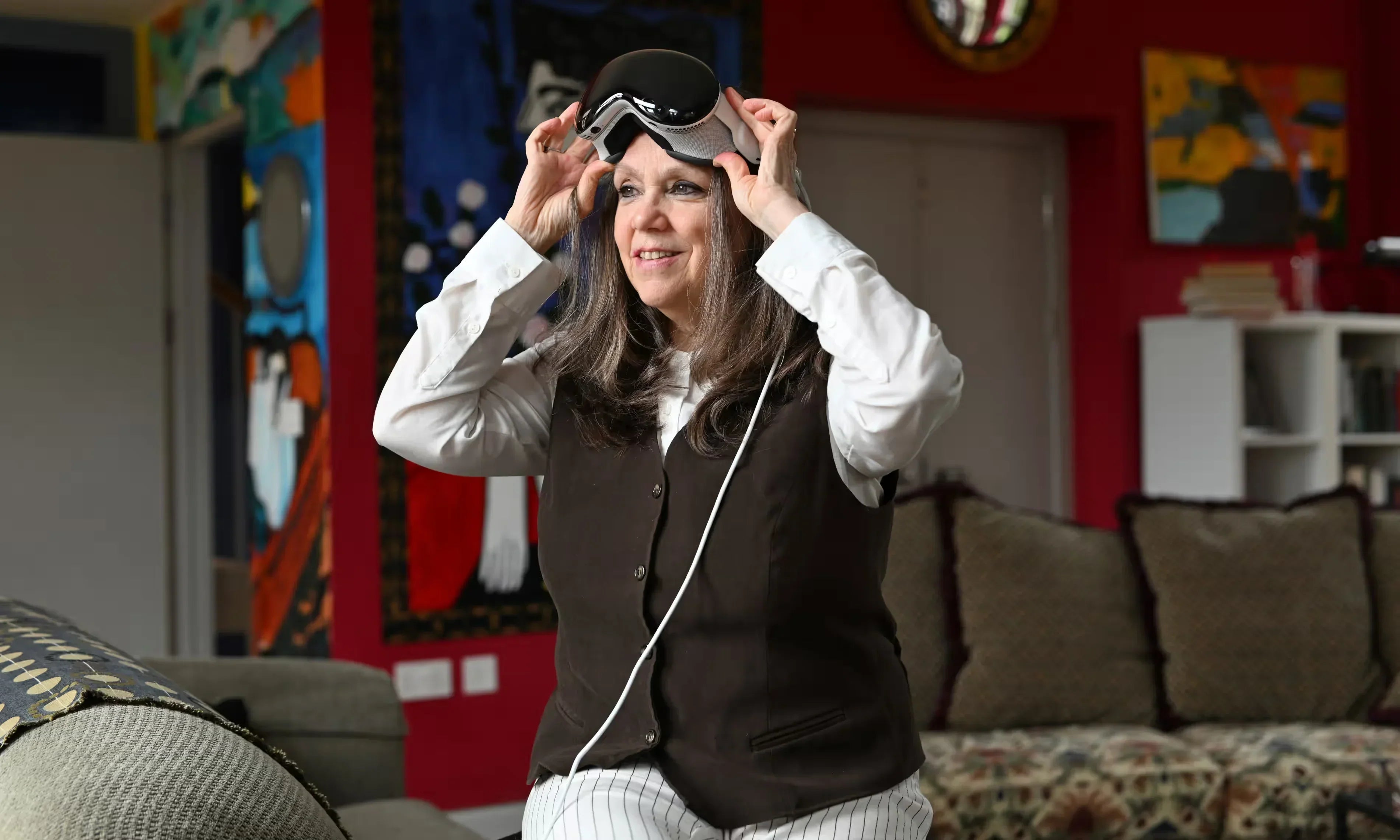Hey guys! We stumbled across this fascinating article online about a 60-year-old writer who found an unexpected solution to her physical challenges through virtual reality. Here's the story!
Imagine being a writer whose career is suddenly threatened by debilitating pain. That's exactly what happened to this author who developed serious shoulder and neck problems that made using her right arm excruciatingly painful. Multiple herniated discs were compressing the nerves in her arm, making sustained creative work nearly impossible. Anti-inflammatories weren't helping, and the brain fog they caused only added to her struggles.
During what was supposed to be a simple trip to get an iPhone charger, she jokingly asked an Apple Store employee if they had any gadgets that could help someone with a temporarily disabled right arm. To her surprise, the employee suggested trying the Apple Vision Pro - the company's new VR headset.
The writer was skeptical at first (who wouldn't be?), but decided to give it a shot. Once she put on the headset, she discovered that the combination of eye tracking and voice control might actually allow her to work again! All she needed to do was look at an app icon, tap her thumb and finger together, and the program would open. She could position multiple virtual screens around her, manipulate digital objects, and even control how much of the real world remained visible.
What struck her most was how this technology immediately relieved her physical pain. With her arm relaxed and not triggering nerve pain, she could navigate programs with ease using just her eyes and minimal hand gestures. The immersive experiences - from lifelike dinosaurs to breathtaking mountain scenes - provided not just a work solution but a mood-lifting escape from her daily pain.
Of course, there was the small matter of the price tag (a whopping $3,500! (R129999)) and explaining the purchase to her husband. After some tense negotiations and explaining that this wasn't just about having a cool gadget but about being able to work again during her pre-surgery months and rehabilitation, he understood and supported her decision.
There are limitations - she can only use the headset for a couple of hours before neck strain sets in (though she found a workaround by lying down), and she's received plenty of skepticism from friends and family. But despite the initial disorientation and concerns about VR's "seductive allure," she's found a new path forward.
The best part? This entire article was written hands-free, proving that sometimes the most unexpected technologies can become lifelines for creative professionals facing physical challenges.
What do you think about technology like this? Could VR be the future of accessibility for writers and other creators? Drop your thoughts in the comments!

